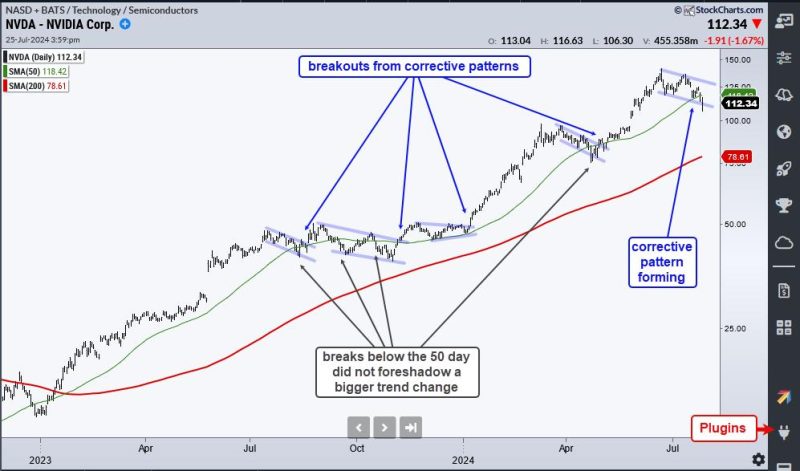In a recent market development, NVIDIA has broken below the crucial 50-day Simple Moving Average (SMA), sparking concerns among investors about the future prospects of the stock. The 50-day SMA is a technical indicator widely used by traders to gauge the overall trend of a stock over a specific timeframe. When a stock breaks below this moving average, it is often seen as a bearish signal, indicating potential weakness in the stock’s price performance.
Investors are now faced with the dilemma of whether this break below the 50-day SMA poses a significant threat to NVIDIA’s stock or presents a buying opportunity for those looking to initiate or add to their positions. To better understand the implications of this latest development, it is essential to delve deeper into the factors driving NVIDIA’s recent stock performance and the broader market dynamics at play.
NVIDIA, a leading semiconductor company known for its innovative graphics processing units (GPUs) and artificial intelligence technology, has been riding high on the wave of increased demand for gaming, data center, and autonomous driving solutions. The company’s strong revenue growth and expanding market share have propelled its stock to new highs in recent years, making it a favorite among investors seeking exposure to the high-growth tech sector.
However, the recent break below the 50-day SMA has raised concerns about the sustainability of NVIDIA’s upward trajectory. Technical analysts often view such a move as a signal of weakening price momentum, potentially signaling a trend reversal or extended period of consolidation. Traders closely monitor moving averages like the 50-day SMA to identify key support and resistance levels that can help guide their trading decisions.
While the break below the 50-day SMA may raise red flags for some investors, others view this as an opportunity to accumulate shares at a potentially discounted price. Market volatility and short-term price fluctuations are common occurrences in the stock market, and interpreting technical indicators like moving averages requires a balanced approach that considers both technical and fundamental factors.
In determining the appropriate course of action following this latest development, investors should take into account NVIDIA’s strong fundamentals, including its solid revenue growth, competitive positioning, and long-term growth opportunities in key markets such as data centers and artificial intelligence. While short-term price movements can be influenced by technical factors, a focus on the underlying fundamentals of the company can provide valuable insights into its growth prospects and intrinsic value.
Ultimately, the significance of the break below the 50-day SMA will depend on how NVIDIA’s stock performs in the coming days and weeks. Investors should exercise caution and conduct thorough research before making any investment decisions based solely on technical indicators. By combining technical analysis with a deeper understanding of the company’s business and industry dynamics, investors can make more informed decisions that align with their investment objectives and risk tolerance.
